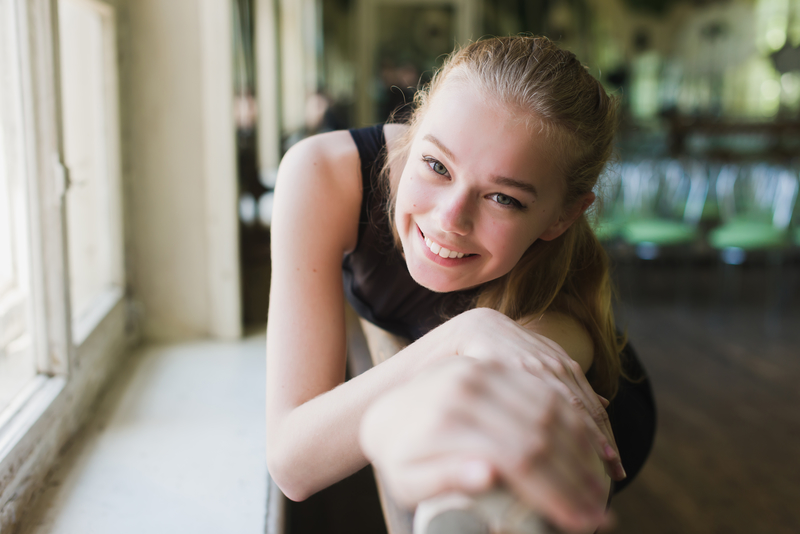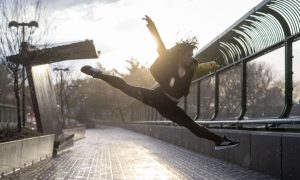Every little ballerina dreams about it, and every adult ballerina remembers it: that first time en pointe. On the less magical side of things, there’s a lot of hard work involved (padding, shoe upkeep, foot hygiene and more). There’s often pain, and sometimes injury. The desire to get up en pointe – from young dancers, parents, and sometimes teachers, can be at odds with the practical indicators of when a dancer is ready for those first pair of pointe shoes. Thus, the longstanding debate in the ballet world on this issue.
To get a professional perspective on the matter, Dance Informa spoke with Dance Medicine Specialist Melissa Buffer Trenouth, MSPT and member of International Association of Dance Medicine and Science. On the whole, Buffer Trenouth sees the strength and flexibility of the feet and ankles as a factor in when it’s appropriate for a young dancer to go en pointe. But it’s far more holistic than that. It involves other physical factors, socio-emotional maturity and more. As a baseline, Buffer Trenouth doesn’t subscribe to age-based prescriptions.
“Age isn’t a great predictor,” she affirms, “because one dancer at 12 years old could be at a certain place emotionally, physically and in technique, and another dancer at the same age could be at a completely different place.”
She explains that the research demonstrates how pointework largely doesn’t affect growth plates – which, on average, close at age 14 or 15. Buffer Trenouth shares that the average age for starting en pointe is 12 years old. In terms of physical condition and technique at that age, when pointe readiness is a highlighted question, she underscores the importance of pelvic alignment control – not just in standing, but in moving and dancing with it.
Solid core strength is also vital, as it helps to maintain that alignment and overall stability. That often, but doesn’t always, follow from overall physical maturation. Ankle strength and stability is an important component of pointe readiness, but one “can’t fix an ankle without fixing a pelvis,” Buffer Trenouth affirms. Both lack of and an excess of plantar (arch of foot) flexibility can lead to issues en pointe. Therapy band (or “theraband”) work can help to balance strength and stability, and thus make both types of feet more pointe ready. With the advancements of padding, toe fillers and the like, most – if not all – foot types can work within a pointe shoe. Calluses, toenail issues and foot skin problems are by and large “par for the course”, explains Buffer Trenouth.
Beyond the physical, she emphasizes the importance of mental and emotional readiness for pointe. Diligence about the necessary maintenance routines are key to success in the work, Buffer Trenouth asserts. These should be a significant part of pre-pointe training, she believes. Conversations with other teachers and parents can help shed light on if dance students are diligent and mature enough to be consistent with these routines. Objective tests, as well as some of the great research out there, can support teachers who may feel as if parents are pressuring them to get their young dancers up en pointe before they’re truly ready, Buffer Trenouth suggests.
For studio owners and teachers who may feel concerned about losing students to competition, “well, you won’t have them if they’re injured,” she quips. Injury soon after first going en pointe is a reasonably sure indicator that the student wasn’t ready. Buffer Trenouth also suggests putting a formal methodology to the whole process, one involving professionals such as physical therapists and multiple dance teachers. She advocates for crystal-clear communication among these parties. “When in doubt,” she urges, “err on the side of health and wellness.”
Another challenge that students may face – apart from an inner drive to get up on those hallowed shoes – is how puberty changes much of physical coordination, proprioception and similar physical senses. In many cases, long bones (such as those in the legs) grow longer than muscle, Buffer Trenouth explains. Thus, that “gawky” feeling of many young teens. Dancers certainly aren’t immune. “Many dancers going through puberty have to go through a re-birth, really, to step back and learn a lot over again,” she says. It can be an opportunity, however, to become interested in different movement forms. “Require modern!” Buffer Trenouth advocates.
If some young ballerinas are frustrated with beginning pointe work, or the lack thereof, exposing them to other dance forms can offer them something else in which to excel. Overall, Buffer Trenouth believes that the dance world is arching toward greater dancer health and wellness. “The synergy of the [dance health] community is contributing to healthier dancers,” she says. “The consensus is wonderful. Everyone’s saying, ‘Let’s get to the root of the problem.'” There are many factors at the root of when any individual dancer is holistically ready to go en pointe. Let’s take a clear-eyed look at it all, and keep our young dancers moving strong for long.
By Kathryn Boland of Dance Informa.















